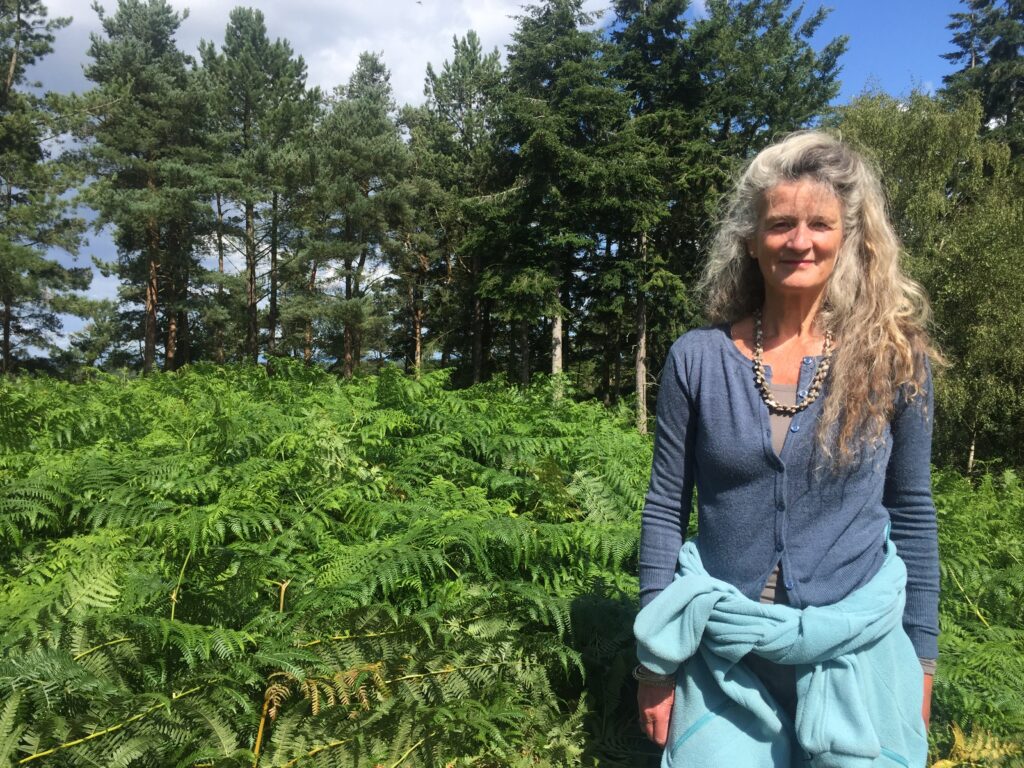(published on Reading the Past blogspot)

How do you find the tracks of a 17th-century witch? This was my quest as I traveled to the Highlands of Scotland to research my novel, Bitter Magic.
Bitter Magic is inspired by the true story of Isobel Gowdie, whose witchcraft confession in 1662 is one of the most famous in Scottish history. Famous, partly because of its length – it was recorded verbatim over the course of four weeks – but mostly because of its uniqueness.
Unlike many witchcraft confessions, which contain similar elements – I made a pact with the devil, I killed someone with a curse, I stopped the milk in my neighbor’s cow – Isobel’s confession veered off significantly from the script that was often fed to and forced out of the victims.
Isobel elaborated upon and embellished her story beyond what her interrogators asked of her, describing what characters looked like and how she felt. She turned herself into a hare or a crow, she said. (The crow became a featured image in my novel.) She talked about leaving her body and flying through the night with the fairies. She knew the fairy queen. “I was in the Downie Hill and got meat there from the queen of fairy, more than I could eat. The queen of fairy is brawlie clothed in whyt linens and in whyt and browne cloathes…”
Isobel knew the devil and was “sore affrighted” of him. Nevertheless, she described having sex with him.
Before I went to Scotland, I spent several years researching and writing drafts of this tale of Isobel Gowdie and her community, including the landed gentry, who were “Covenanters.” These strict Presbyterians believed that “cunning women” like Isobel, peasants who adhered to the old folklore and beliefs, were demons in human form. I was also interested in the Christian women who may have been sympathetic to or protective of the “witches,” like my protagonist, Margaret.
I wanted to find all the places I had researched and written about in my first drafts of Bitter Magic – the castles where some of my characters lived, the “fermtoun” where Isobel lived, the Auldearn Church where she met the devil, but most of all I wanted to find the Downie Hill, Isobel’s sacred place. I wanted to climb up and stand on top of it. Would I find a special vibrational energy there? Would I sense the “Otherworld? From my research I had learned that The Downie Hill was an actual hill and that it is still where Isobel said it was, between Auldearn and Brodie. This was where the fairy queen lived, she said, and where she could enter the Otherworld of fairies, elves, and other beings. The Downie Hill would open and she would go in to see and visit them.
The Downie Hill, in actuality, is a mound, one of a number of mounds or hillocks that are now assumed to be Iron Age dun forts (750 BC – 43 AD). These were ancient dwellings or forts that scholars believe, over time, became covered with earth and buried. Some of them have been excavated to reveal artifacts, but many, like the Downie Hill, have not.
In Isobel’s time, the 1660s, the mounds were known as fairy mounds. Most people, even the church and ruling class, believed that these mounds were where the fairies were active and that magic happened there. Thus, they were, and still are, called fairy mounds.
Great Britain has a very handy mapping system, the Ordnance Survey, that plots almost every hill and valley as well as ancient sites. On the OS map, I located the Downie Hill. But finding it on the ground was not so easy.
I drove around the neighboring roads until suddenly I spied, across a wide expanse of field and almost hidden behind a thicket of trees, an enormous mound. A cone-shaped hill thrusting up out of the flat land that I would have missed if the sun hadn’t been shining directly on it. I stopped at the farmhouse across the road and knocked on the door. A friendly young man at the door said, oh yes, that’s an old hill fort. And it was okay if I walked over to it. I trudged the half mile across the stubbly field, and when I came to the tree-covered hill, discovered that the area around it was too overgrown with ferns and brush to get through.

in the bracken
When I told my new friend Morag about my find, she was as enthusiastic as I to visit the Downie Hill, and on this sunny July day we set out on our adventure in her little sports car with the top down. We found another path from a roadside lay-by, and began to hike in. Now we could see the hill, but the terrain was uneven and covered with six-foot ferns – bracken. I had reservations about pushing through, but Morag, a more intrepid hiker than I, said, “Of course we can forge through all of that,” and I followed her up the hill. At the top the bracken was as thick as below, but we found a small clearing and stood amidst the ferns.
A sudden quiet fell. No bagpipes playing from the clouds, no wild men in kilts, and not even flickering fairies. The sun sparkled and the ferns shone green and radiant, and we were drawn inward, to a stillness in tune with this place.
I looked down. On the ground beside me was a crow feather.
I picked it up, took it home, and tacked it on the wall above my writing desk.